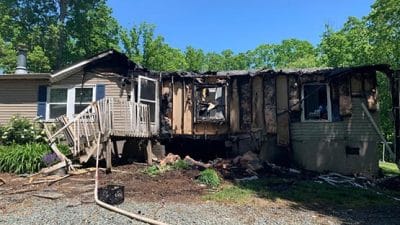
Let us break this down. A stroke, or “brain attack,” occurs when a blood clot blocks an artery (a blood vessel that carries blood from the heart to the body) or a blood vessel (a tube through which the blood moves through the body) breaks, interrupting blood flow to an area of the brain. When either of these things happens, brain cells begin to die and brain damage occurs.
When brain cells die during a stroke, abilities controlled by that area of the brain are lost. These abilities include speech, movement and memory. How a stroke patient is affected depends on where the stroke occurs in the brain and how much the brain is damaged.
For example, someone who has a small stroke may experience only minor problems such as weakness of an arm or leg. People who have larger strokes may be paralyzed on one side or lose their ability to speak. Some people recover completely from strokes, but more than two-thirds of survivors will have some type of disability. This is according to www.stroke.org/site/PageServer?pagename=stroke.
Now, here is a stroke, according to me, based on the above statement. First, “brain attack” is a politically correct term. A stroke is a stroke. You are now damaged in some way or manner and need to adapt and not surrender. More than two-thirds of survivors will have some type of disability. I am part of that two-thirds, and I am very happy I survived. It allows me to write for this paper to get the word out of this serious medical issue.
Learn the many warning signs of a stroke. Act FAST and CALL 9-1-1 IMMEDIATELY at any sign of a stroke.
Use FAST to remember the warning signs:
- F—FACE: Ask the person to smile. Does one side of the face droop?
- A—ARMS: Ask the person to raise both arms. Does one arm drift downward?
- S—SPEECH: Ask the person to repeat a simple phrase. Is their speech slurred or strange?
- T—TIME: If you observe any of these signs, call 9-1-1 immediately.
NOTE THE TIME WHEN ANY SYMPTOMS FIRST APPEAR. If given within three hours of the first symptom, there is an FDA-approved clot-buster medication that may reduce long-term disability for the most common type of stroke.
Learn as many stroke symptoms as possible so you can recognize stroke as FAST as possible.
Stroke symptoms include:
- SUDDEN numbness or weakness of face, arm or leg – especially on one side of the body.
- SUDDEN confusion, trouble speaking or understanding.
- SUDDEN trouble seeing in one or both eyes.
- SUDDEN trouble walking, dizziness, loss of balance or coordination.
- SUDDEN severe headache with no known cause.
Call 9-1-1 immediately if you have any of these symptoms
Note the time you experienced your first symptom.
This information is important to your healthcare provider and can affect treatment decisions.
Please react quickly to any suspected stroke. Do not be like me and tell everyone you will be fine. To know me is to love me, but I’d rather not have the stroke. People are hard headed sometimes; they do not want to bother anyone.
Strokes can be devastating, so adhere to keeping yourself and your friends alive.
What is cerebral arteriosclerosis?
Cerebral arteriosclerosis is the result of thickening and hardening of the walls of the arteries in the brain. Symptoms of cerebral arteriosclerosis include headache, facial pain, and impaired vision.
Cerebral arteriosclerosis can cause serious health problems. If the walls of an artery are too thick, or a blood clot becomes caught in the narrow passage, blood flow to the brain can become blocked and cause an ischemic stroke. When the thickening and hardening is uneven, arterial walls can develop bulges (called aneurysms). If a bulge ruptures, bleeding in the brain can cause a hemorrhagic stroke. Both types of stroke can be fatal.
Cerebral arteriosclerosis is also related to a condition known as vascular dementia, in which small, symptom-free strokes cause cumulative damage and death to neurons in the brain. Personality changes in the elderly, such as apathy, weeping, transient befuddlement, or irritability, might indicate that cerebral arteriosclerosis is present in the brain. Computer tomography and magnetic resonance imaging (MRI) of the brain can help reveal the presence of cerebral arteriosclerosis before ischemic strokes, hemorrhagic strokes, or vascular dementia develop. This is according to: www.ninds.nih.gov/disorders/cerebral_arteriosclerosis/cerebral_arteriosclerosis.htm.
Now, this has been the most fearsome with the stroke resulting from cerebral arteriosclerosis part I can deal with. I am the walking poster child for this with the exception that I am classified with the severe stage. I am not a candidate for any surgeries unless it becomes a life-threatening event. When you say I am hard-headed, I actually am. The MRI I received a few months back states that I am “void” of a blood flow. This means that I am not a zombie, but the flow is so small it can not be seen. Standing for periods of time is no longer viable. I no longer have the needed flow to keep myself in a marathon shape. I do retain my intellect but it becomes clouded when I exceed the needs of the available blood flow to my brain.
So how does this affect me? I want for everyone to know who is a caregiver or even with this disease to realize it is serious and draining to any individual. I remember a show named “All in the Family.” Archie used to tell Edith, “Don’t get sloppy on me now in your age.” I never knew completely what that meant. I do now know that everyone needs to recognize what can happen. I have the following symptoms that are the same as stated from the National Institute of Health, but more detailed. In order to fill those details, here we go.
Let’s start at the top. I mean the top of the body. It mentions headaches, oh yeah, people. This is from the lack of oxygen due to the blood flow making its way into the “Thomas Muffins Nooks and Crannies” of your brain. I will make it easy by being descriptive.
This is a signal to you to “sit” or “lay down.” Allow the blood flow to get back into where it is needed. Stop working and do not take the work with you in a seated or prone position. You only cheat yourself.
Admit to yourself that you need this. Do not try and work through it. Are you stubborn and want to try it anyway? Wake up on the floor like me many times. If you have had a stroke before, getting off the floor is horrible.
I have no idea why they tell you in the elderly watch the following symptoms. If you have it, I say it is the same no matter what age. They have listed dementia but do not really go into dementia. Me, I am starting to forget relatives’ names and items relating to that. Did I eat this morning? Have I taken my medications? This is real, folks. So listen to your survivor and inform your medical physician. I am also more exhausted than normal because I try to just “do.” People like me need to “do.” There are many of us hard wired from birth and you can see that in your prior usage of sick leave.
I hope I kicked this around enough for those who need to know. I shall return again in print.
Column by Chris DeWald










